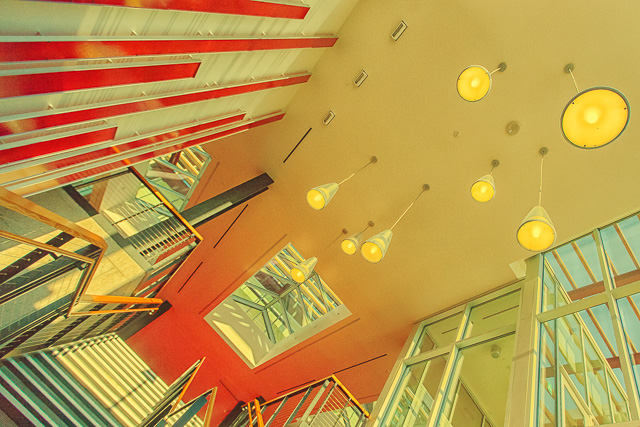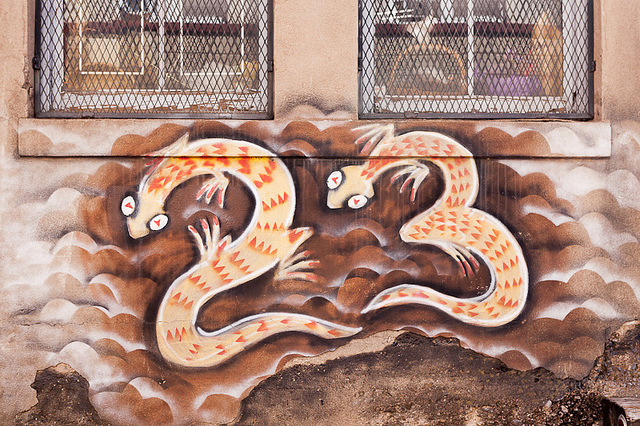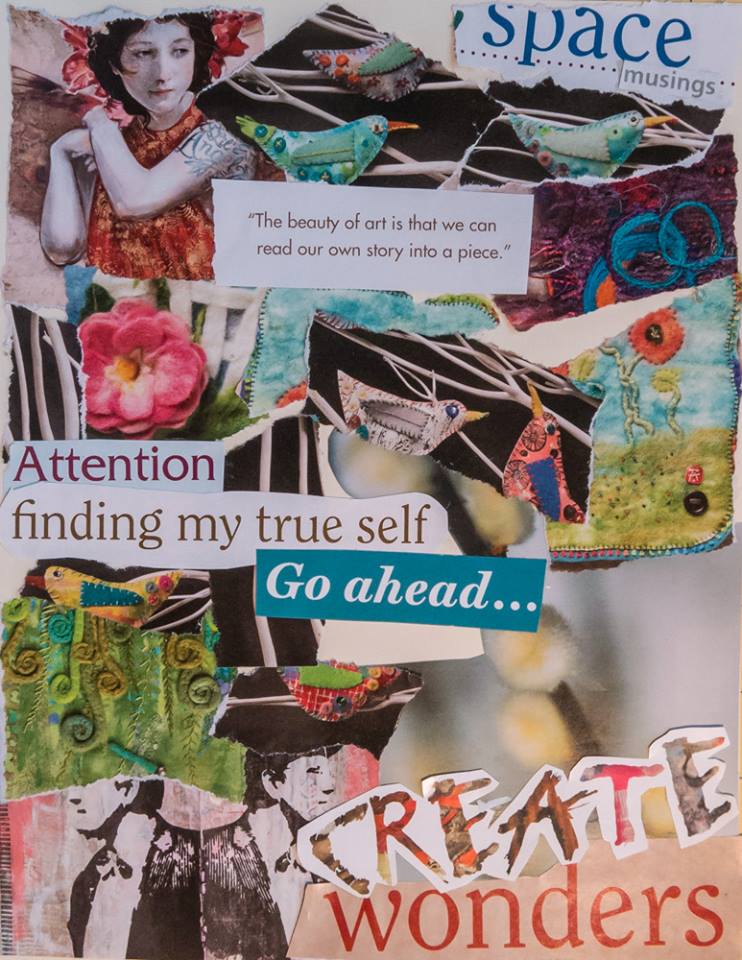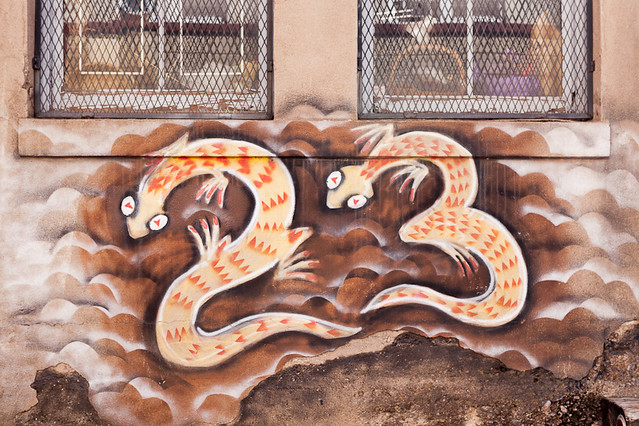“The portal of healing and creativity always takes us into the realm of the spirit.” ~ Angeles Arrien
During a recent visit to an office complex, I entered an underground tunnel connecting two buildings. Immediately, I was drawn to an expanse of back-lit art on the tunnel wall. It was a digitally designed collage of medical records, x-rays, charts and lab reports – all created as specifically as art.
As I walked through the tunnel, I took photos of the walls and photos of the tunnel ahead, its mouth leading into a room of blues and greens. Then as I routinely do — a photographer’s habit — I turned around to see what was behind me.
I gasped in delight and raised my camera to capture the image. The scene was not lost on me. In fact, it evoked such a deep joy, I knew this photograph would be an important photo point in my life, not just another photograph.
The photo encapsulated – in a single digital frame – my journey that had spanned over two decades, a summary of the last 20+ years of my life!
Before entering the tunnel, my husband and I had walked past a mural of the Southwest — red rocks and cacti and sunshine painted on a thirty foot long wall, brightly illuminated. When I turned around, three-quarters of the way through the tunnel, I gasped at the metaphor surrounding me:
The yellow-orange images of the Southwest spilled into the dark-hued tunnel of medical records. I saw the last twenty years meet my present. All I could see was the light at the end of the tunnel. Cliche? Yes, but so true!
“Be soft. Do not let the world make you hard. Do not let the pain make you hate. Do not let the bitterness steal your sweetness. Take pride that even though the rest of the world may disagree, you still believe it to be a beautiful place.” ~ Kurt Vonnegut
My journey to the sunshine and living in the desert Southwest half of each year didn’t happen serendipitously.
After decades of being cared for, watched over, protected from harm, I’d developed strong dependency issues. An introvert at the best of times, I functioned best in a quiet environment, a place where I did that which I felt comfortable doing, while passing unwanted responsibilities to others.
Through all the therapy and group programs, I made friendships and relationships with others enmeshed in the same mental health system. It was a safe enough place, but also restrictive and not always the healthiest of environments.
Eventually I realized I needed to move forward. I needed more than a life in the shadow of over-protection. I needed to stop defining myself as mentally ill and instead accept the residual effects of PTSD and the self-care it required.
It was a huge awakening AND it terrified me.
Reviewing my habits, I knew I would not easily change if I stayed in the protective, though loving, environment I’d existed in for years.
My husband and I had vacationed in Arizona several times and with each visit I felt more deeply connected with the Southwest and the desert. Eventually, I devised a plan to return to the Southwest – alone.
Not only would this plan provide me with the necessary container to practice the skills of independent living, it would also alleviate the symptoms of Seasonal Affective Disorder which disrupted my moods every winter in the cloudy Midwest. After working out a careful plan and contingency arrangements for safety, my medical team, family and I all agreed to the experiment.
That was five years ago.
I’ve lived in the Southwest for a part of each year since then. The first winter, I stayed eight weeks. I struggled managing the basics, and I mean the basic basics. Buying groceries, preparing meals, driving in an unfamiliar city, shopping, putting gas in the car, taking care of myself. As simple as these tasks might appear, there were many days I struggled from the time I awoke until I went to bed.
I did several art shows and my husband planned his visits to coincide with those long weekend shows. I had several weekend visits from family. And when I was on my own, I spent my days reading and writing, visiting new places, and taking photographs.
I discovered living in ways I hadn’t experienced in decades. A doable version of solo living. I created. I practiced extreme self care. I managed.
The second year, I stayed in Arizona nearly three months. Fewer visitors. More art shows. However it was never easy, even living in the land of sunshine. I was incredibly lonely, and sought support through long distance therapy and lots of phone calls to family.
But – once again I was on my own. My camera was my constant companion. I explored even more of Arizona and its many habitats. Once again, I managed.
And I turned to the solitude of the desert for support and inspiration.
For the last three years, I’ve lived in Arizona from November to early May. We invested in a tiny casita for home and studio – perfect at 500 square feet. Though there are plenty of rough edges, my days are filled with many positives.
I forged friendships, joined a vibrant and active art group, took field trips with a camera club.
I do freelance photography shoots, although I no longer do shows on the art fair circuit. I volunteer with a social justice group. I share my art in shows and galleries. And most days, I pick up my camera and go explore.
I have a deep sense of gratitude for what the practice of creativity and my art has given me – a way of making meaning in my world.
“Healing art . . . the concept is catching fire, is awakening in people’s spirits. Artists, musicians and dancers are realizing their imagery has meaning. . .that their imagery heals them, others, their neighborhood, or the earth.”
~ Michael Samuels
For more years than I care to admit, I was angry and bitter at the turn of events in my life,. The fierce awakening of my past robbed my family and me of so many precious years. And although our family’s well being was our highest priority and our goal was to provide our children with as much normalcy as possible, reality trumped all.
As we traversed life on a day-to-day basis, we all lived with an intimate knowledge of mental illness – its sorrows, its high and low points, and its successes, too.
In the process, my children learned valuable life skills — skills of independence, tolerance for the differences in others, kindness, cooperation, delayed gratification, and an abiding sense of knowing they were loved and accepted for who they were, not what they did.
No matter how difficult the day, or the week, or the month, my husband and children offered their support. We weren’t perfect – far from it. At times each of us felt cheated as we felt the alienation of life on the edge. But ultimately, we would reconnect and move on, move forward.
“So you must not be frightened if a sadness rises up before you larger than any you have ever seen; if a restiveness, like light and cloudshadows, passes over your hands and over all you do. You must think that something is happening with you, that life has not forgotten you, that it holds you in its hand; it will not let you fall. Why do you want to shut out of your life any uneasiness, any miseries, or any depressions? For after all, you do not know what work these conditions are doing inside you.” ~ Rainer Maria Rilke, in Letters to a Young Poet
Living through difficulties and trials, we all discovered how to survive and thrive.
I also realized that there was no reason to live my yearned-for life — someday. Waiting for someday is a long wait.
It was time to experience the gifts AND challenges of each day, every single day.
~~~~~~~~~~~~~
This updated post is the last in the original series of my story, an intimate exploration of PTSD, art and healing, first published in January 2013.
Order Tramadol Overnight My deepest thanks to all who accompanied me on this journey – as participant, observer, reader.











